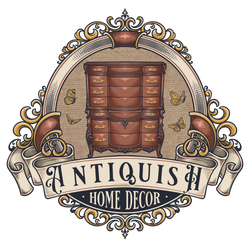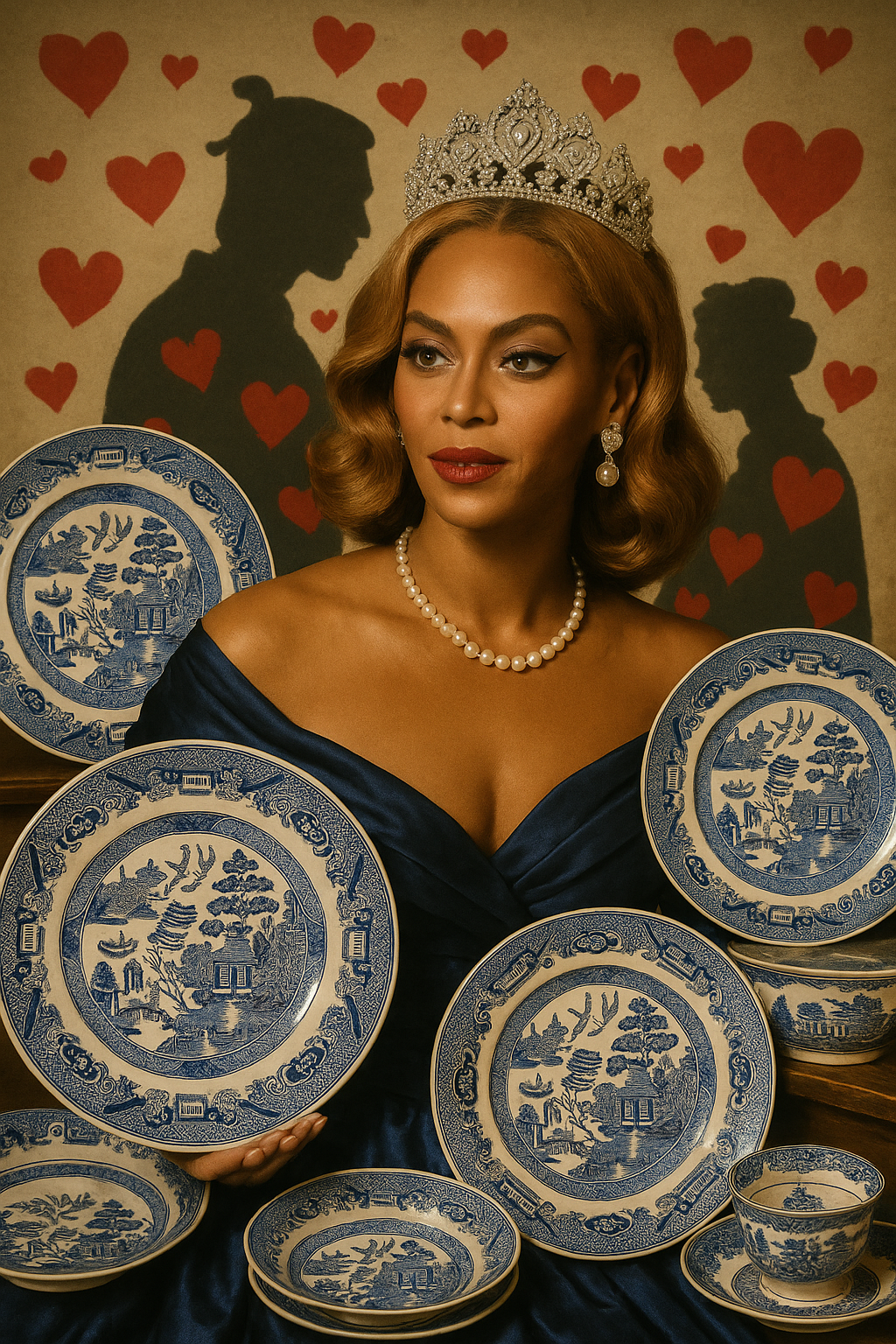The pattern, the (totally fabricated) folklore, and why the South fell head over heels for it.
Let’s be honest—Blue Willow is the Beyoncé of dinnerware. Instantly recognizable. Universally admired. And still turning heads after more than 200 years.
But here’s the plot twist: the love story behind the Blue Willow pattern? 100% made up. Cooked up in an English pottery marketing department. And it worked—brilliantly.
Let’s break down how a fictional tale turned one blue-and-white pattern into a global icon, and why it’s still found in hutches, sideboards, and grandmillennial dreams across the South.

Classic Blue Willow pitcher and basin—rich in detail, timeless in style. Now available at AntiquishHomeDecor.com.
📜 The Origin of the Pattern (Hint: Not Actually Chinese)
Despite the pagodas and willow trees, Blue Willow is a British invention, not an imported treasure from China. In the late 1700s, the British were obsessed with Chinese porcelain—but it was expensive and slow to import. So English potters decided to make their own.
Thomas Minton, a gifted engraver, created the earliest version of the willow pattern around 1780. Pottery powerhouses like Josiah Spode, Thomas Turner, and others refined the design and began printing it on ceramic plates using a technique called transferware—a method that made ornate designs affordable to the middle class.
The result? Mass-produced dinnerware that looked elegant and exotic but was totally local.

Antique 19th century Spode Porcelain Dinner Plates
Photo Credit: Ruby Lane
🕊️ Enter the Fake Folklore
Now, you might be wondering: what’s with the bridge, the birds, and the whole romantic vibe?
That’s the genius part.
To make the pattern even more appealing, English marketers invented an epic love story to go along with it. It had nothing to do with actual Chinese folklore, but that didn’t stop anyone.
Here’s the legend:
A rich Mandarin’s daughter, Koong-se, falls in love with a lowly clerk, Chang. Daddy doesn’t approve and promises her to a wealthy Duke.
The lovers flee across a bridge (yep, that’s the bridge), hide in a teahouse, and live in bliss for a while—until the Duke catches up with them.
Tragedy strikes, but in a twist of poetic justice, the gods turn Koong-se and Chang into a pair of doves, forever flying above the landscape.

The story was printed on advertisements and pamphlets alongside the plates—and people ate it up. Literally.
🏡 Why the South Fell in Love With It
So how did a British pattern with a fake Chinese backstory become the beloved china of the American South?
By the 19th century, Blue Willow was being manufactured in the U.S. and sold through department stores and mail-order catalogs. It was elegant, timeless, and had just enough romantic flair to feel special—but it was also accessible.

photo credit: Southern Living
Southern households, with their deep-rooted love of tradition, storytelling, and heirloom culture, embraced Blue Willow like it was family. It became the “good china” brought out for Sunday dinners and bridal showers. The plates passed from grandmothers to daughters to daughters-in-law. And soon, it wasn’t just dinnerware—it was heritage.
💙 Why It Still Works
Fast forward to today, and Blue Willow is having a full-blown grandmillennial revival. And why not? It’s classic, it plays well with vintage and modern, and it looks just as good on a gallery wall as it does under a slice of pecan pie.
Whether you're a maximalist layering it with toile and brass or a minimalist using a single piece for impact—Blue Willow brings charm, character, and conversation to the table.
photo credit: stripesandwhimsy.com
Final Thoughts
Blue Willow isn’t just a pattern—it’s a marketing success story, a cultural chameleon, and a Southern icon all rolled into one. Its love story may have been made up, but its legacy is very real.
So the next time you see a Blue Willow plate in a thrift store, antique booth, or your grandmother’s china cabinet, you’re not just looking at pottery. You’re looking at a tale that’s been retold—and restyled—for over two centuries.
And honestly? It still slaps.
Got a favorite Blue Willow memory, collection, or heirloom?
Tag @antiquishhomedecor or leave a comment below—I'd love to see how you're styling this timeless classic in your home.

